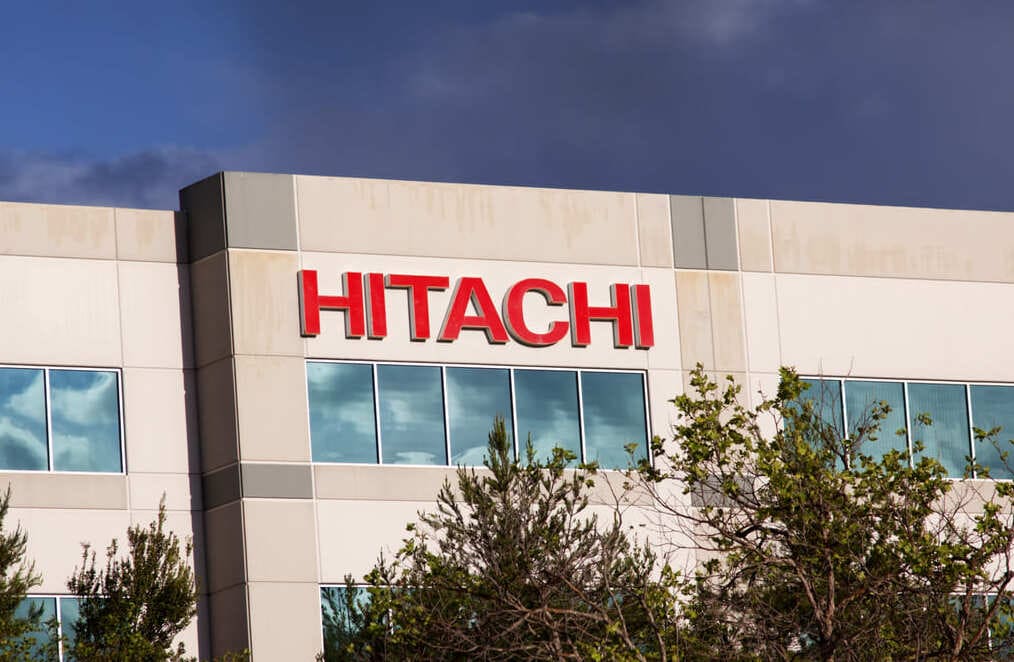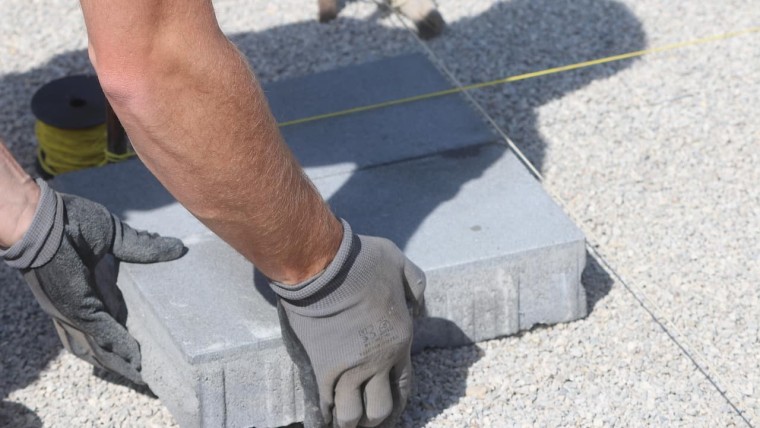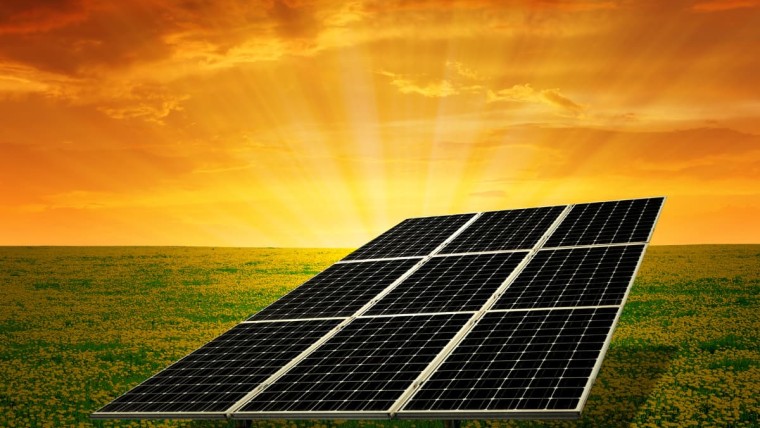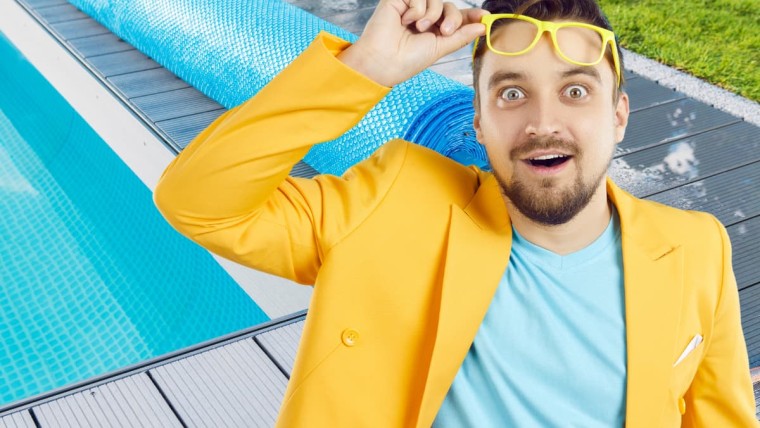We are talking about Hitachi heat pumps, but it is important to know that the company behind them is mostly owned by Johnson Controls, a giant in the world of building controls. One of their control installations at the Pentagon would have helped to save the latter in large part following the attacks of 11.09.2001. It was in October 2015 that Johnson Controls and Hitachi joined in a Joint Venture, 60% shares for Johnson Controls and 40% for Hitachi Air Conditioning solutions.
The brand does not specialize in heat pumps but in all types of systems aimed at thermal comfort, whether in the residential or tertiary sector. Hitachi offers its Yutaki S range of heat pumps, which has recently been upgraded to a 2.0, as well as a variety of wall-mounted air-conditioning units, ducted units, cassettes for hairdressing salons or gyms, etc. (small commercial sector). In tertiary sector they offer more industrial devices, chillers, DRV, etc.
NB : Our partners RGE, GSP or RESCERT (France, Switzerland, Belgium) will send you a free estimate for a Hitachi Yutaki or other model of air-water heat pump according to your request => via this quick form
For the purpose of this review, we're going to focus on the Yutaki Combi S 2.0, that product you can see in the picture below, whiter than white, on the right side of this oh-so-perfect laundry room.
In addition to this fridge style block, there is a group to put outside, a bit ugly as usual for all brands, that's why it doesn't appear too often on the docs or marketing material of the brand.
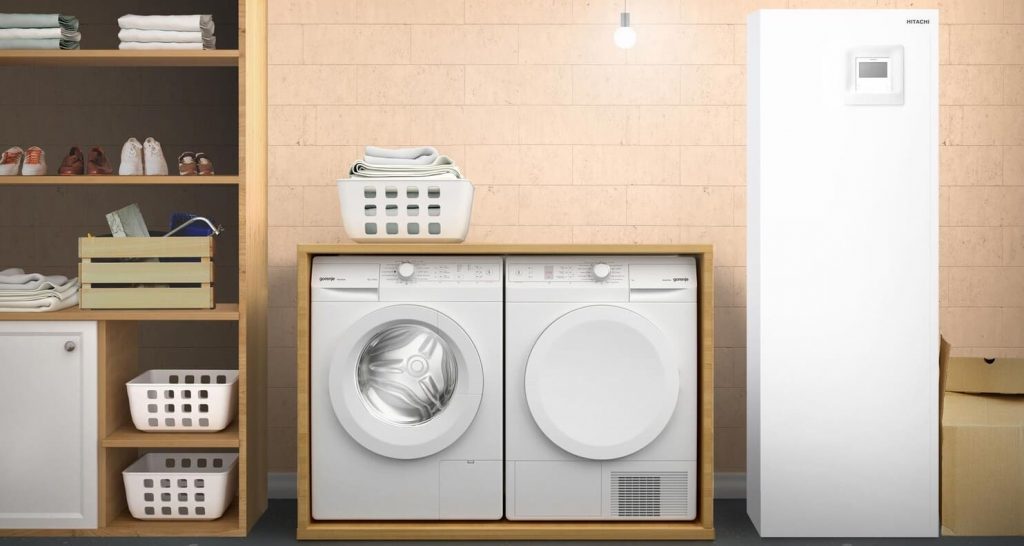
Well, in reality, inside it is like this (left) and there is the external group (right: the photo is for the small powers, for the biggest powers it is necessary to double the group: equivalent 2 superimposed in height)
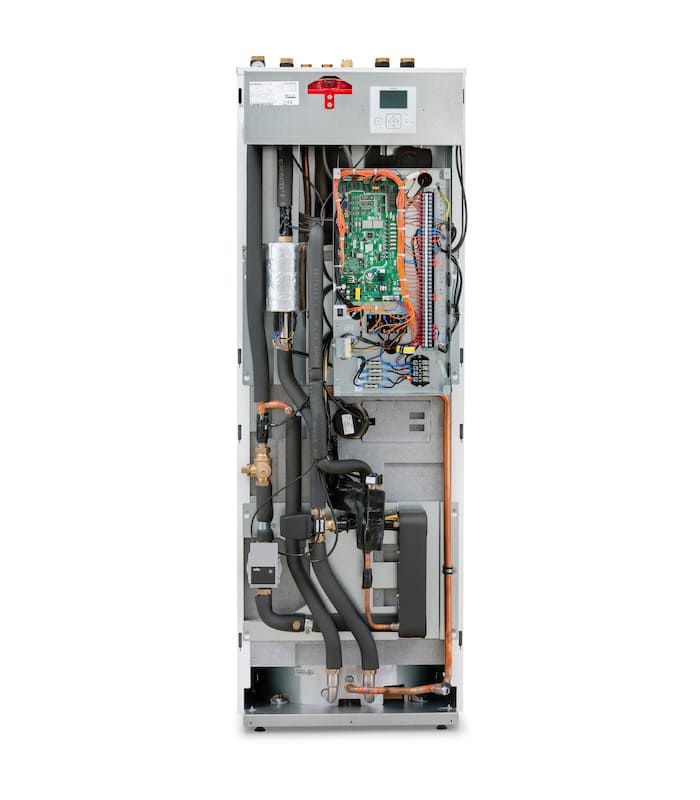
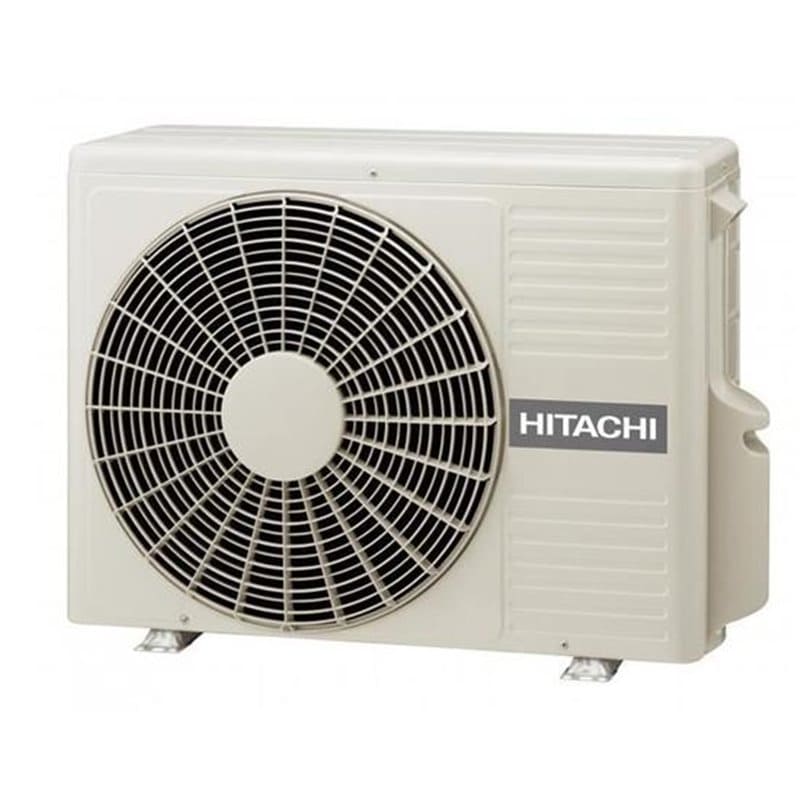
This Yutaki Combi S 2.0 product is a Bi-bloc air-to-water heat pump (also called Split) with the domestic hot water tank integrated in the indoor module.
This means that the outdoor unit captures heat from the outside air through the refrigeration circuit, the compressor and the evaporator it houses.
The indoor module redistributes the heat to the water in the network through a condenser.
The product being composed of two parts, it is called bi-block. Refrigerant must circulate between the two parts, thanks to the refrigerant pipes that make the link, but that also constitutes a point of fragility of the system, seat of possible leaks on the medium to long term, if not installed with precautions.
The product has just undergone a facelift by moving to 2.0, demonstrating the dynamism of the heat pump market in the residential sector against a backdrop of substantial state aid for some time.
Hitachi Yutaki Combi S 2.0 aesthetics
The appearance of the Yutaki S was getting old. The light grey color in which it came out of the factory has been replaced with the 2.0 by a very modern pure white color, which is a bit amplified by the photo touch-ups. The interior module will fit perfectly in a technical room, a laundry room as on the picture, a garage, or a room where people pass by. Its appearance of a fridge will make it quickly go unnoticed.
As for the outdoor unit, it will have to be placed in a place that is not too visible in the garden, or in front, behind a wall perhaps. The picture above speaks for itself.
We note that for this new edition, Yutaki S Combi 2.0, the new controller has been awarded a design prize: the European Product Design Award. It is true that it is stylish!
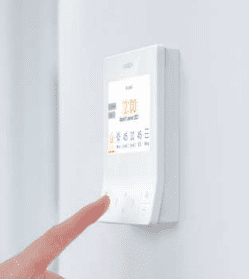
The performance of the Yutaki S Combi 2.0 R410A or R32
For small powers up to 8kW, Hitachi offers the R32 outdoor unit, then from 11kW it always works with R410A, fluid that it will no longer be possible to use in new installations containing less than 3kg by January 1, 2025, because of its GWP (Global Warming Potential... the ozone layer) three times higher than its replacement.
It is available in 6 models from 4.3kw to 16kW (power at 7°C in the outside air, 35°C water outlet of the heat pump)
Let's start with the models connected to the outdoor unit that runs on R32
The new gas of the future. As Hitachi's motto would say: "Inspire The Next".
| Hitachi Yutaki S Combi 2.0 R32 | 4.3kW model (A7/W35) | 6kW model (A7/W35) | 8kW model (A7/W35) |
| Power (A-7/W35) | 5.3kW | 6.2kW | 7.5kW |
| Power (A-7/W45) | 5kW | 5.8kW | 6.67kW |
| Power (A-7/W55) | 4.2kW | 5kW | 5.5kW |
| COP A7/W35 | 5.25 | 4.8 | 4.6 |
The line to take into account depends on your case. If you are in low temperature, with underfloor heating, you can read the first line to have an idea of the power developed in winter if it is -7 and you provide 35°C water to your underfloor heating. Moreover, the COP of the last line corresponds to what you will obtain in reality.
However, if you need to supply your system with hotter water because your emitters are older or designed that way, then you need to look at the other two lines. With older radiators, the last line is relevant because you will need to bring them to 55°C. You can see that the power delivered is less. Moreover the COP is not the right one, it should be recalculated for this water temperature of 55°C, because in the state it is only valid for 35°C. The COP will be less good
The DHW tank has a nice capacity of almost 300 liters, very good for a family of 4 to 7 persons. You will need 2 hours to bring the water volume from 10°C to 55°C, in case of an average outside temperature of 20°C, so in winter much more time.
With this heat pump you can also do cooling in summer, because it is reversible. You will have up to about 7kW of cooling power with the Yutaki S Combi 2.0 model, the largest in R32. Enough to ensure a cooling for a BBC house of some 100m2, or for an older house of 60m2 for example. A bit "just" in the latter case, but it must be seen that cooling is a luxury, so we can also accept not to cool perfectly to limit its consumption, and make some savings.
Let's continue with the models connected to outdoor units running on R410A
| Hitachi Yutaki S Combi 2.0 R410A | 11kW model (A7/W35) | 14kW model (A7/W35) | 16kW model (A7/W35) |
| Power (A-7/W35) | 10.6kW | 12kW | 13kW |
| Power (A-7/W45) | 10kW | 11.6kW | 12.5kW |
| Power (A-7/W55) | 9.7kW | 11.2kW | 12kW |
| COP A7/W35 | 5 | 4.71 | 4.57 |
This R410A model can provide a nice power in its biggest version, enough to heat a city of about 150/200m2 depending on the region and the type of emitters.
The COP values shown are only valid for underfloor heating. If you have old radiators, ask your installer for the real value.
The domestic hot water tank (DHW) with a capacity of 288 liters, will be brought to temperature in 1h05 if it is 20°C outside. Otherwise it will take longer.
For cooling, you can go up to 10.5kW, with an EER of 3.3 (EER = equivalent to COP but in cooling)
Acoustic or noise for this Yutaki S
The indoor module of the Yutaki Combi S 2.0 is given at 37dBA of sound power, which is low, practically inaudible, depending on the existing noises in the room, the consistency of the walls, the acoustic insulation of the walls. For the highest power ratings, this value reaches a maximum of 39dBA, which is still in the same range.
The sound pressure at 1m from the outdoor unit ranges from 46dBA for the smallest power to 50dBA for the largest power. The latter may require you to install an acoustic enclosure for the heat pump, depending on your area of residence, so that the noise generated does not exceed 5dBA in relation to the ambient noise during the day, and 3dBA in relation to the ambient noise at night (more difficult depending on whether the area is quiet or not at night). These limit values are extracted from the Public Health Code, which considers the noise emergence of your machine in comparison with the noise of the environment in which you are, distinguishing between day and night.
The documentation does not necessarily specify how these dBA values are measured. Therefore, ask your installer for more detailed information on acoustics. They will vary, for example, if you install the outdoor unit along a wall, or in the middle of a field, or in a corner.
Indeed, the reverberation amplifies the noise. It is necessary to think about all this, so that the result does not disturb the whole Republic, and brings you to court. You have other things to do, such as measuring your energy savings with the magnificently designed regulation that we will talk about a little later.
Some notable technical features for this machine
All the connections, whether water or refrigerant, are grouped together on the top of the machine in a very practical way. This will make your installer's life easier than yours. This is an ideal configuration for efficient maintenance.
The hot water tank is compact, since it fits in the inner module with a section of about 600 x 600mm. Its specificity lies in the material of which it is made, since it is made of DUPLEX steel. It is a stainless steel highly corrosion resistantwhose development is attributed to the Scandinavian offshore industry.
It is indeed to solve problems of high corrosion in the North Sea, on oil fields, that we started to be interested in these grades of stainless steel and that they evolved. The alloy contains nickel, molybdenum and chromium, but also nitrogen, which increases the resistance to pitting corrosion. This gives Hitachi systems a long service life over the long term.
Finally Hitachi offers with the Yutaki S 2.0 Combi or not, an optional 2-zone kit, which will allow you to manage two zones in your home that need a separate water temperature. For example, if you have a part of your home with underfloor heating, and another part with radiators.
What is the price of the Yutaki Combi S 2.0
Depending on the power, you will find these PAC, material only, between 5000 and 10'000 € for the biggest power. This price does not include the installation, in fact it will be necessary to count between 5 and 10k€ more for this service, according to your region and your installer.
If you are looking for the Yutaki S Combi 2.0, your best option is probably to go through an installer who gets professional discounts from major suppliers, and will allow you to get the equipment at the best price.
These are the pro prices from the official Hitachi 2021 public catalog for the Yutaki S and Combi S: your installer will get discounts on them, depending on his annual installation volume, maybe between 10% and 30%. You, as an individual, will not be able to order directly.
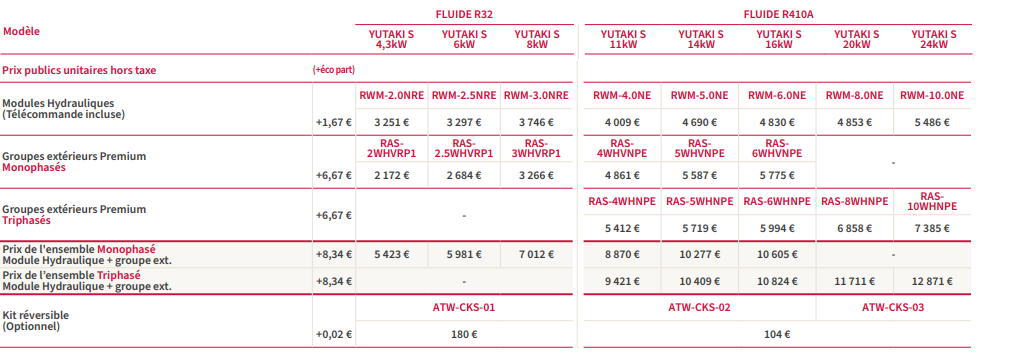
for Combi S
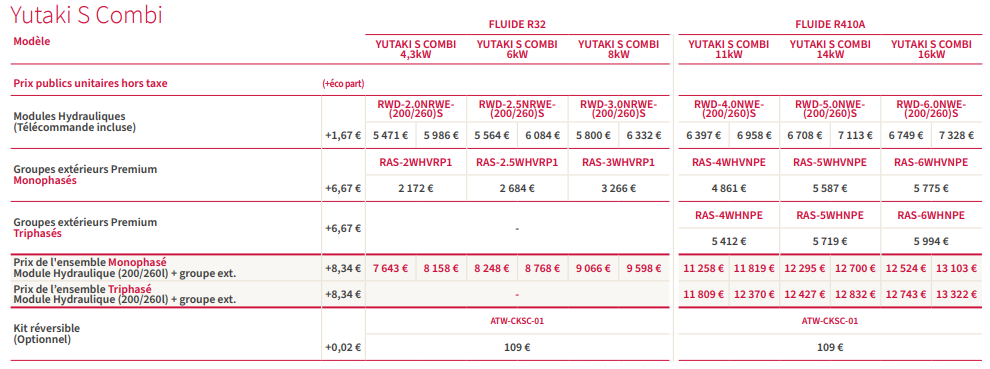
Moreover, the pure purchase price is not the only thing to take into account. Indeed, it is possible in France for this heat pump to receive consequent aids. By the way, if you want to know more, you can read the article on heat pump assistance in France. Also, you will have to plan for maintenance, for a few hundred euros more per year, if you want to benefit from the guarantees. Finally, since the air-to-water heat pump is still an electric heater, you will have to take into account the price of electricity and calculate how much it will cost you.
To calculate the electricity consumption of a heat pump, if you were previously on electric (basic electric radiators), then you can get an estimate by dividing your bill by the SCOP of the machine (average COP). Example: you used to consume 3000€ per year of electricity (250€ per month), now you will have a bill of 1000€ per year, or 83€ per month.
You can also take the power consumption of the data sheet, at the average temperature and for the water temperature that concerns you (35°C underfloor heating, 55°C old school radiators), and then multiply it by the number of hours that the heat pump will run in the year.
We never really know this data, but there are known averages, and in particular in France it is around 1800 to 2200 hours per year, depending on the region, or even a little more in colder regions. For example, for the Yutaki S Combi 2.0 8kW with R32, this would give you on an underfloor heating: 1.74kW x 2000h = 3480kWh per year. For kWh around 0.16 cts of euros, that would give you about 550€ of bill per year, that is to say less than 50€ per month (rough estimate for order of idea)
Regulation, a pride of the Yutaki S Combi 2.0
Let's get to the point that Hitachi is most proud of, as the brand was awarded a European Product Design Award in 2020 for the controller. You can see here this mention on the official website.
Overall, this product meets a demand for simplicity in navigating to the temperature setting by the heat pump end user. Typical products prioritize other aspects, while Hitachi delivers a simplified, colorful, and more comfortable than average user experience thanks to a worked key angle. Even a very young child could adjust the temperature easily, remember to place it at a sufficient height :).
This controller connects to the Hi Kumo remote maintenance platform, which allows a higher reactivity in case of failure or defect. Your installer can therefore make his diagnosis remotely, if you grant him access to your PAC, via the network.
How much space does this heat pump take up?
Here are the technical specifications of the Yutaki Combi S 2.0
This heat pump has the advantage of a compact interior module that fits well in a kitchen, and contains the domestic hot water tank, which avoids placing a separate tank and saves space in the home.
As for the outdoor unit, for the smaller R32 models the height of 630mm will make it easy to conceal, which is less the case for the larger outdoor units with almost 1.40m high.
Overall,
Hitachi updates its popular Yutaki S line, focusing on improved ergonomics and design, through a more modern interior module and an award-winning controller for its simple design.
This heat pump does not require much space, and offers fairly high SCOP (average cop for average climate) at more than 4 for underfloor heating, which remains to be measured in practice.
The noise of the outdoor unit must be taken into account in your reflection, not only to determine the ideal position of the machine on your land, but also to protect you from claims or legitimate complaints with regard to the French Public Health Code. Ask your installer, and if he doesn't know much, get an acoustic expert to come and help you. It will cost you a few hundred euros, but you will not have to face any lawsuit if he advises you correctly.
Also worth reading about:
Review of another Japanese pac: Panasonic Aquarea.
Opinions on the daikin Altherma 3 H HT
TOP 20 Best air-to-water heat pumps

Julien G.
Juliena mechanical engineering graduate and specialist in climate engineering since 2009, has become a writer specializing in renewable energies, with expertise in heat pumps and photovoltaic solar panels for individual housing.
See all articles by this author
